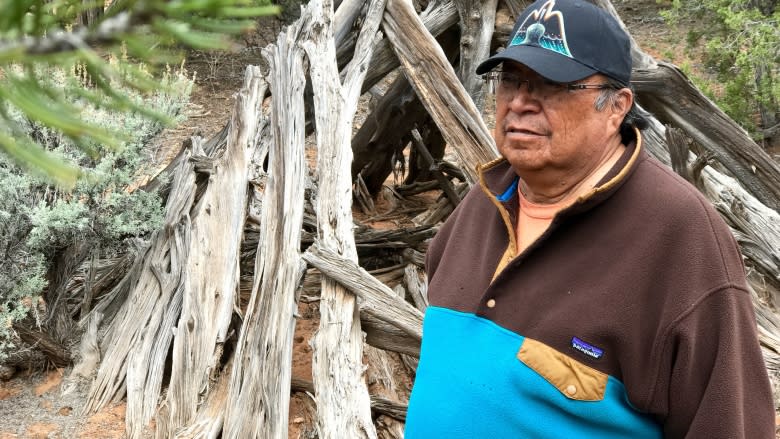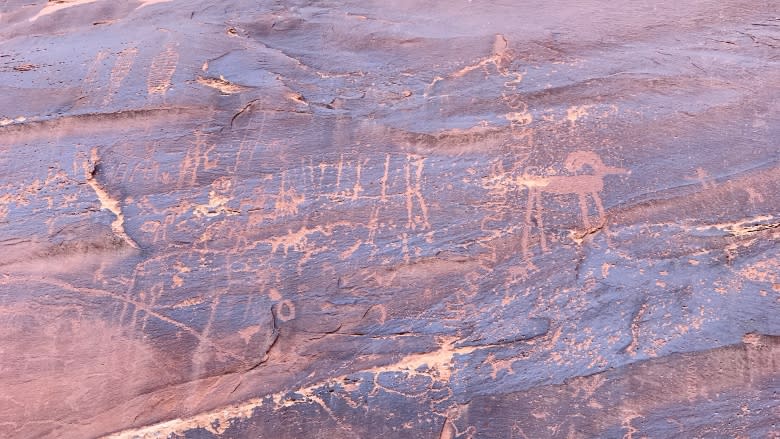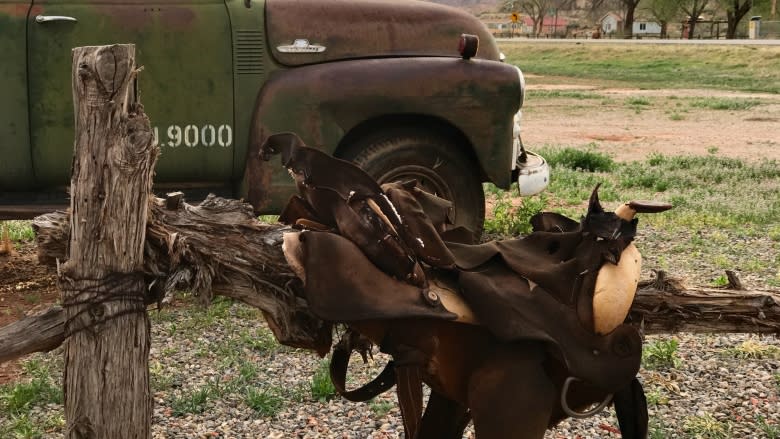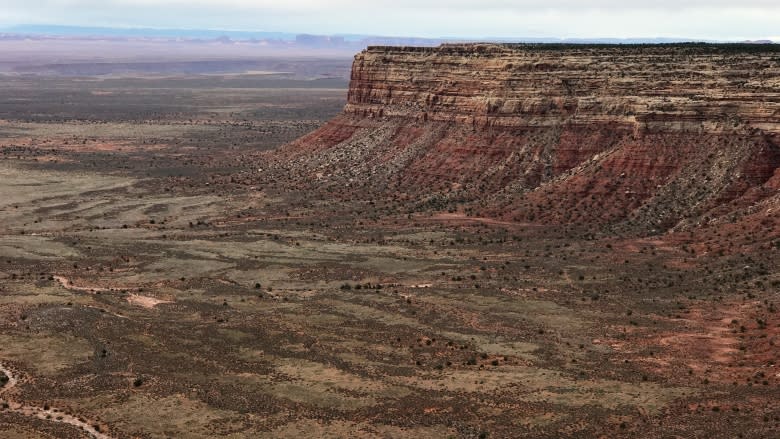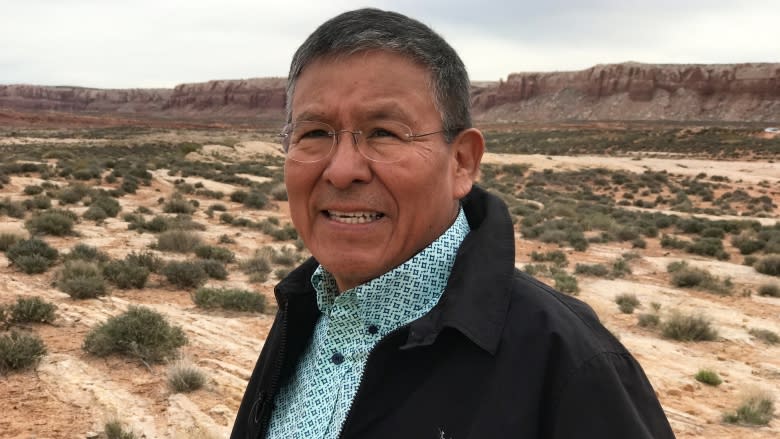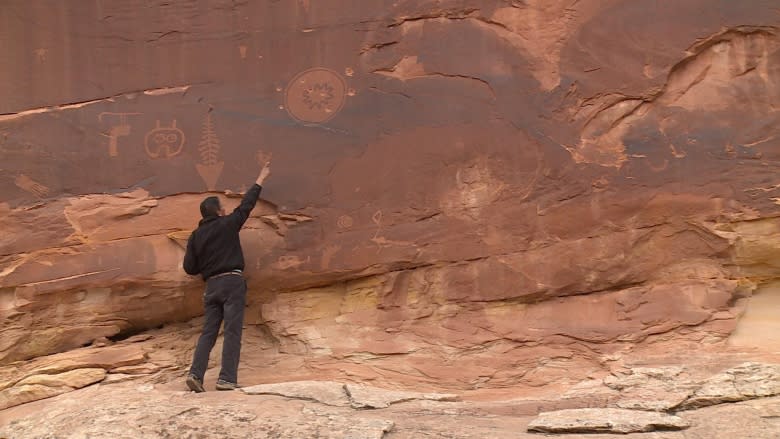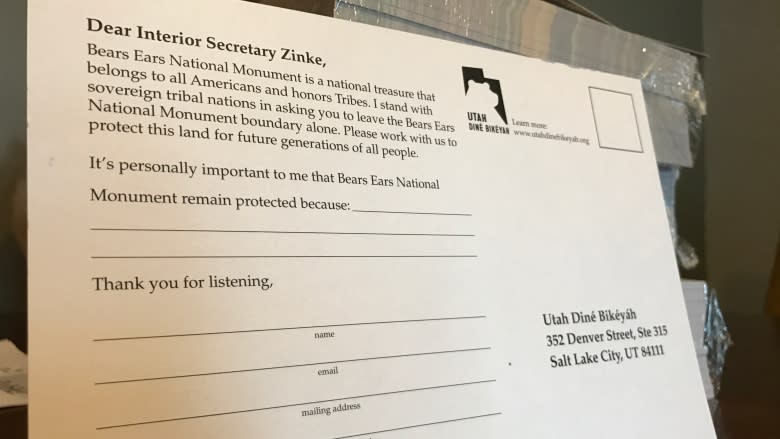The battle for Bears Ears, the park Republicans want Trump to erase
Standing on a ledge near the top of Cedar Mesa in southeastern Utah, you can see the pair of even-sized buttes that give one of America's newest parks its name. Looking at them head-on, with a bit of imagination you can picture a giant pair of ursine ears rising from the desert.
Bears Ears National Monument is an area roughly the size of Prince Edward Island: 5,470 square kilometres of canyons, mesas and reddish beige desert. In some parts, it looks as though a giant took a hammer to a mountain, then gathered up the boulders and stacked them into piles. But long before Bears Ears was officially born at the end of 2016, many in this state were working to kill it.
Now Donald Trump is president, they hope they will get their way.
Utah congressman Jason Chaffetz said Bears Ears was the first thing he spoke to Donald Trump about when he met with the president last month. Senator Orrin Hatch said he spoke with Trump about Bears Ears during the president's first week in office.
Utah residents fighting back
Nicole Holliday, who comes from a ranching family in nearby Blanding, Utah, proudly points to the fist-sized sticker on her truck's rear window, showing a yellow bear on which is written #NO Monument. The NO is in bold.
"For one man to strike his pen and take over a million acres, like ... holy cow!" Holliday says.
Former president Barack Obama used the 1906 Antiquities Act to decree the national monument as one of his last acts as president, over the loud objections of almost all the state's Republican lawmakers. Some were upset the area would be cut off from development and oil and gas extraction. Others said when other areas in Utah became national monuments, locals found their livelihoods hurt by a flurry of new regulations.
"They say that all the access will be the same, that we'll be able to get our wood, that the grazing rights will stay the same," Holliday says. "They say that right now. But I don't believe it."
5 Indigenous groups requested park
However support for Bears Ears is much higher among the five Indigenous tribes that united to create this park: the Hopi, Navajo, Ute, Ute Mountain and Zuni tribes.
Every week or so, Navajo elder Jonah Yellowman comes to Bears Ears to collect medicinal herbs, but he always finds more than just the sage he's looking for. He holds up a shard of what looks like clay.
"You see this?" he says. "It's all over the place here. So be careful where you step."
Yellowman displays slivers of what he says are pottery and tools from the Indigenous people who lived in the area many generations ago. Bears Ears has thousands of ancient burial grounds, cultural sites and rock art that date back millennia.
"It's something that we're trying to preserve," Yellowman says. "It's spiritual, it's our ancestors. They're still here."
The fact that five tribes collaborated to spearhead a national monument is an important first for Indigenous groups. Obama even created a commission to ensure the tribes got their say in how it's managed.
Fear of restrictions on land use
That's what riles Utah residents like Blanding's Clayton Perkins, who says more than 60 per cent of the state's land is already controlled by the federal government.
"Being a national monument, they're going to start restricting it, restricting access, restricting the freedoms that we already enjoy up there," Perkins says.
And it's not the first time, he says.
In the 1990s, Utah's government tried — and failed — to scrap a park created by former president Bill Clinton, Grand Staircase-Escalante National Monument. This time around, they have a president who has spoken of allowing oil and gas drilling in national parks and a Republican-controlled Congress who would like federal lands returned to state control.
Utah Governor Gary Herbert signed a resolution calling for President Trump to rescind the park and the state legislature approved two bills that would shrink the Bears Ears and Grand Staircase-Escalante monuments and give the state the right to manage it.
But it won't be easy for Trump to overturn Obama's decision.
Created under the Antiquities Act
The Antiquities Act gives presidents the power to create monuments, but not undo them. If Trump can't get rid of Bears Ears, Utah's Republican lawmakers have suggested he shrink it, or simply stop funding it. Environmentalists say if that happens, they're ready to defend Bear's Ears in court.
The 2016 Republican Party platform calls for an amendment to the Antiquities Act which would give Congress and states the right to block the president from declaring national monuments. Utah Republican Congressman Rob Bishop, chairman of the House Committee on Natural Resources, would like to abolish the Act entirely, calling it "the most evil act ever invented."
David Nimkin, a regional director with the National Parks Conservation Association, worries if Trump is able to erase one park, he could come after others.
"It needs to be reinforced that these are in fact public lands, Nimkin says. "All citizens of the United States have a stake and vested interest in protecting these areas."
And if they aren't protected, the consequences are plain to see, according to one of the driving forces behind the creation of Bears Ears.
Navajo elder Mark Maryboy clambers nimbly across a steep rocky slope. After about 10 minutes of climbing, he reaches one of the area's most spectacular ancient petroglyphs, known as the Wolfman panel, a series of anthropomorphic figures carved into the cliff. Among them are a crane and a long man with werewolf-like claws. Maryboy points to a scattershot pattern of holes in the cliff.
Petroglyphs damaged by bullets
"These holes are made by bullets," Maryboy says. "Somebody shot a high-powered rifle, using this drawing as a target."
He points to the nine holes that mar the ancient images.
"That practically destroys the artwork, and it will all be gone. There's some more of those holes right here. There's over 100,000 sites, and in many of these locations you see the similar bullet holes."
Maryboy says other cultural sites have been looted, even hacked off with power saws.
"And for that reason we're doing everything we can to keep everything in place, and reaching out to our friends who have sympathy for the environment to help us lobby in Washington, to ensure that the monument remains," Maryboy says.
Navajo hogan still standing
At the top of Cedar Mesa, Yellowman points to more signs of his roots. Some tree branches are stacked together in the shape of a tent, the wood so old it's grey.
"That's a hogan," Yellowman says. "I was raised in one of those."
Yellowman says this traditional Navajo dwelling was built before white settlers came. His people lost this land once already, he says. He can't help but feel like it could happen again.





